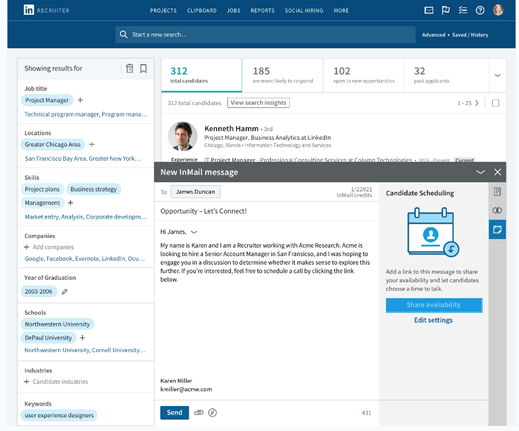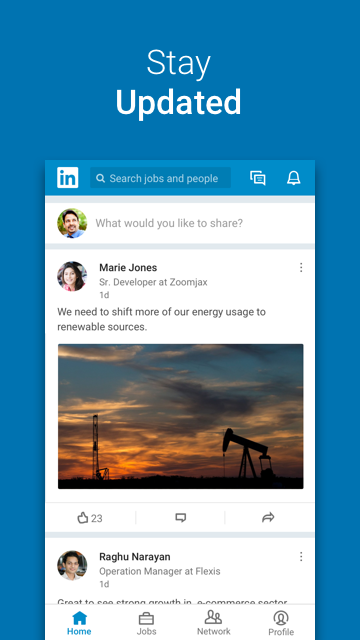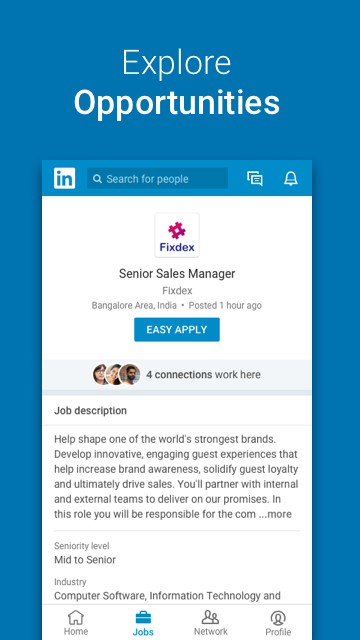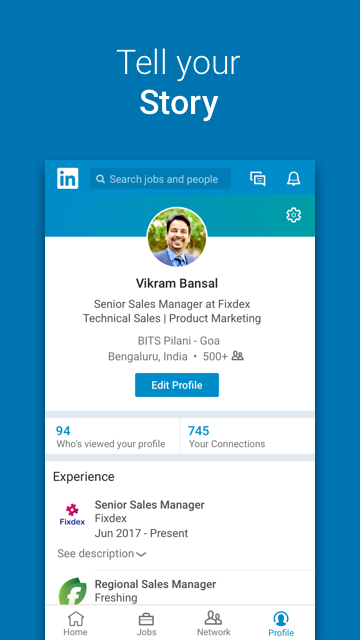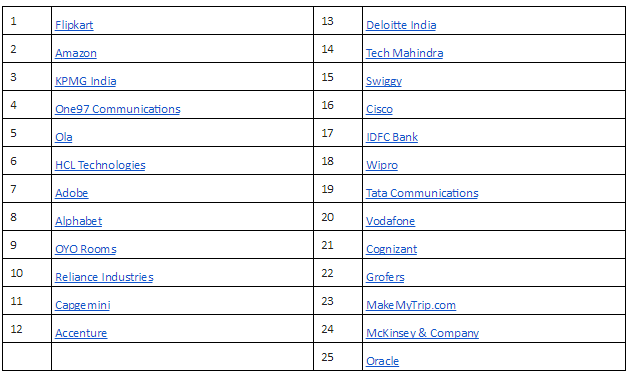LinkedIn, the world’s largest professional network on the internet, unveiled the 2018 Top Companies list for India. The annual ranking highlights the 25 companies in the country that are most sought-after by professionals, based on proprietary LinkedIn data and billions of actions by more than 546+ million professionals on LinkedIn.

Homegrown tech and mobile internet companies Directi, Flipkart and One97 Communications Limited steal the top three spots on this year’s list, followed by Amazon in the #4 position that held the #2 spot for two consecutive years. Ola has dropped 11 spots from #5 in 2017 to #16 this year, and McKinsey & Company has made a significant jump from #24 to #6. This year, more than 50% of the companies are new entrants to the list including Directi [#1], Anheuser-Busch InBev [#5], EY [#9] and Daimler AG [#11] that have given stiff competition to the usual top runners, Adobe [#12], Reliance Industries [#24], and Ola [#16].
Adith Charlie, India Editor, LinkedIn said
The Top Companies list highlights the companies where professionals in India want to work now, from home grown companies to global giants. Studying the job interest rates, engagement with the company pages on the platform as well as retention rates, we found several common threads that make these companies the most preferred among Indian professionals. Data shows us that an opportunity to work at solving big problems, rewriting the rules of one’s industry or simply putting a big name on one’s resume could be powerful motivators. This year the India list diversified from tech and internet companies to new entrants from industries such as Automotive, Oil & Gas, and Consumer Goods. Similar to last year we continue to see a trend of homegrown companies taking the top spots on the list.
As competition for job-seekers intensifies, the 2018 Top Companies have actively deployed employee-first strategies such as flexible hours, a good parental leave policy, and time-off to do more than work to attract and retain good talent. Some of the emerging themes this year are:
Unconventional hiring methods – The top companies in India are looking beyond the grades and college rankings to recruit new talent. Directi [#1] cherry-picks talent using unconventional techniques such as case studies, tasks like app development and solving the Rubik’s cube. At Alphabet [#7], if you were to land an interview, expect questions such as, ‘Estimate the number of tennis balls that can fit into a plane’, and ‘Which do you think has more advertising potential in Boston — a flower shop or funeral home‘, DBS Bank [#15] hired around 150 techies last year through hackathons alone.
Flexibility first – With job seekers increasingly demanding a work-life balance, these top companies have chalked out flexible parental leave policies and programs for planned time-off to recuperate or even pick up a new hobby. Amazon [#4] has a Ramp Back program that offers new parents eight weeks of flexibility and partial work hours, so they can acclimatize to their new schedules. At McKinsey & Company [#6], under ‘Take Time’, employees can take five to 10 extra weeks off to pursue their passion – get a pilot’s licence, write a book – or attend to family matters. At Daimler AG, they say, ‘We want that the job is flexible enough to accommodate your other needs. Not the other way around.’
Wellness at work – Wellness and fitness facilities continue to be the top draw for employees while choosing a company to work for. Alphabet [#7] is known for its gourmet meals, fitness facilities, and on-site childcare services, whereas Ola has on offer multiple clubs for activities ranging from music to sports — where employees can mingle with other teams.
Democratising power – From office interiors to policy creation, top companies are ensuring its employees have a say in how things are done. For instance, PwC‘s NextGen Sounding Board comprises 200 millennial employees who participate in policy creation for the company. All new and revised people policies are first taken to this group. OYO crowd sources ideas for designing its five-floor office from employees. So whether it’s pictures of Jeff Bezos and Elon Musk adorning the walls or London-style telephone booths, employees at OYO have a say in how they want their surroundings.
Learn to lead: The top companies have made in talent growth and development an in-house responsibility. EY [#9] last year rolled out a program called EY Badges that allows employees to earn digital certificates for skills like artificial intelligence, data science and data visualization. Nurturing employees to become future leaders, GE [#17] runs eight different leadership programs; and MakeMyTrip [#18] offers a bevy of free courses for its employees, ranging from customized behavioural programmes to study tours to Europe and Southeast Asia.
Here are the 2018 Top 10 Companies for India:
- Directi
- Flipkart
- One 97 Communications [Paytm]
- Amazon
- Anheuser-Busch InBev
- McKinsey & Company
- Alphabet [Google]
- KPMG India
- EY
- OYO
The full list of 2018 Top 25 Companies for India can be found here. Join the conversation on LinkedIn using the hashtag #LinkedInTopCompanies.
LinkedIn Top Companies List Methodology
The Top Companies list is the only ranking of its kind to be based entirely on the actions of users. We analyze billions of data points generated by LinkedIn’s 546+ million members around the world to come up with a blended score used to rank the winners in each geography.
How the list was assembled: The methodology is designed to measure interest in a company’s jobs and people, as well as a company’s ability to retain its employees. Some of the metrics include:
- Job demand – At what rate are people viewing and applying to job postings, including paid listings, unpaid ones and those linked from other sites? All job views and applications are normalized for the total number of job postings.
- Engagement with the company – How many professionals are viewing a company’s career page? How many new followers has the company attracted?
- Interest in its employees – How many non-employees are viewing and asking to connect with a company’s employees?
- Retention – Are employees sticking around for at least a year?


